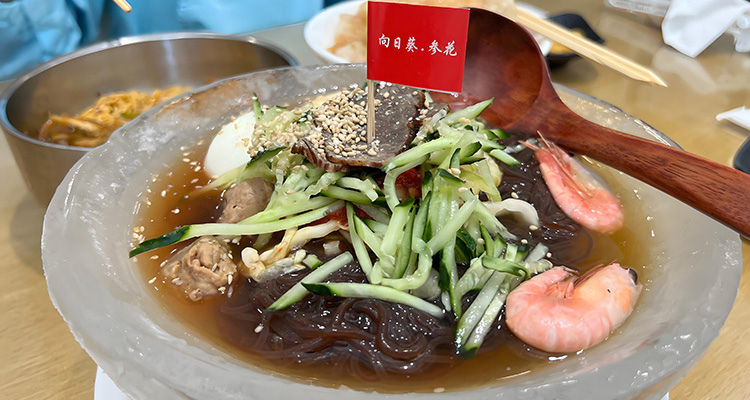Yanji Cold Noodles: Refreshing Korean Summer Dish
Introduction
On hot summer days, Yanji Cold Noodles are the perfect refreshing meal. This Korean-Chinese dish comes from Yanji, in Jilin Province, China. The chewy noodles, chilled tangy broth, and crisp toppings instantly cool you down. Eating it feels like walking through the cool forests of Northeast China. This dish blends traditional Korean flavors with local Chinese culinary culture, making it a summer favorite.
1. Origins and Cultural Significance
Yanji Cold Noodles originated from Korean culinary traditions. They first became popular in the Korean Peninsula and later arrived in Northeast China with migrating Korean communities. Over hundreds of years, the dish evolved into a summer specialty in Yanji.
For locals, cold noodles are more than food—they symbolize hospitality and summer joy. Families and friends gather to enjoy cold noodles, reflecting the warm, welcoming spirit of the Korean-Chinese community. In Yanji, serving a bowl of cold noodles shows care and respect for guests, making it a cultural icon.

2. Ingredients and Preparation
Noodles: Made from buckwheat or corn flour, the noodles are chewy and springy.
Broth: The key to flavor. Slowly simmer beef or chicken stock, then add pear juice, apple vinegar, and seasonings for a mild sweet-tangy taste.
Toppings: Include boiled egg, cucumber strips, sliced beef, and pear slices. Colorful and nutritious, these toppings complement the noodles perfectly.
Preparation: Boil the noodles, then cool in ice water to maintain texture. Chill the broth, then pour over the noodles and add toppings. Every step emphasizes “cold” and “fresh” to ensure a crisp, satisfying bite.

3. Flavor and Eating Experience
Yanji Cold Noodles offer a unique taste. The chilled, tangy broth has hints of fruit and meat flavors. Noodles are soft yet chewy, while toppings add crunch and freshness. The combination of sweet, sour, and savory flavors awakens the taste buds.
The traditional way to eat is mixing noodles and toppings thoroughly, then slurping them to enjoy the broth. You can add chili sauce or vinegar to taste. Locals often pair the noodles with kimchi, enhancing the layers of flavor.

4. Where to Try Authentic Yanji Cold Noodles
For an authentic experience, try these popular spots in Yanji:
- Shunji Traditional Cold Noodles: Famous for classic flavors.
- Service Building Cold Noodles: A local favorite with chilled soup.
- Jindalai Cold Noodles: Offers traditional Korean-Chinese taste.
Prices range from 20-50 RMB per person. When ordering, simply say, “One bowl of cold noodles, please,” and the server may ask if you want ice or a flavor adjustment.
5. Home Version
You can recreate a simple version at home. Cook store-bought buckwheat noodles, then rinse in cold water. Prepare a broth using beef or chicken stock with apple vinegar, sugar, and salt. Chill it in the fridge. Top with cucumber, boiled egg, and ham.
Though not as authentic as restaurant versions, this homemade recipe offers a refreshing summer dish for family meals.
Conclusion
Yanji Cold Noodles are more than just noodles—they are a sensory summer adventure. They offer a perfect mix of chewy noodles, chilled tangy broth, and crisp toppings. Include this dish in your Northeast China travel list. Let the icy sweet noodles take you on a culinary journey through Yanji’s unique flavors.


